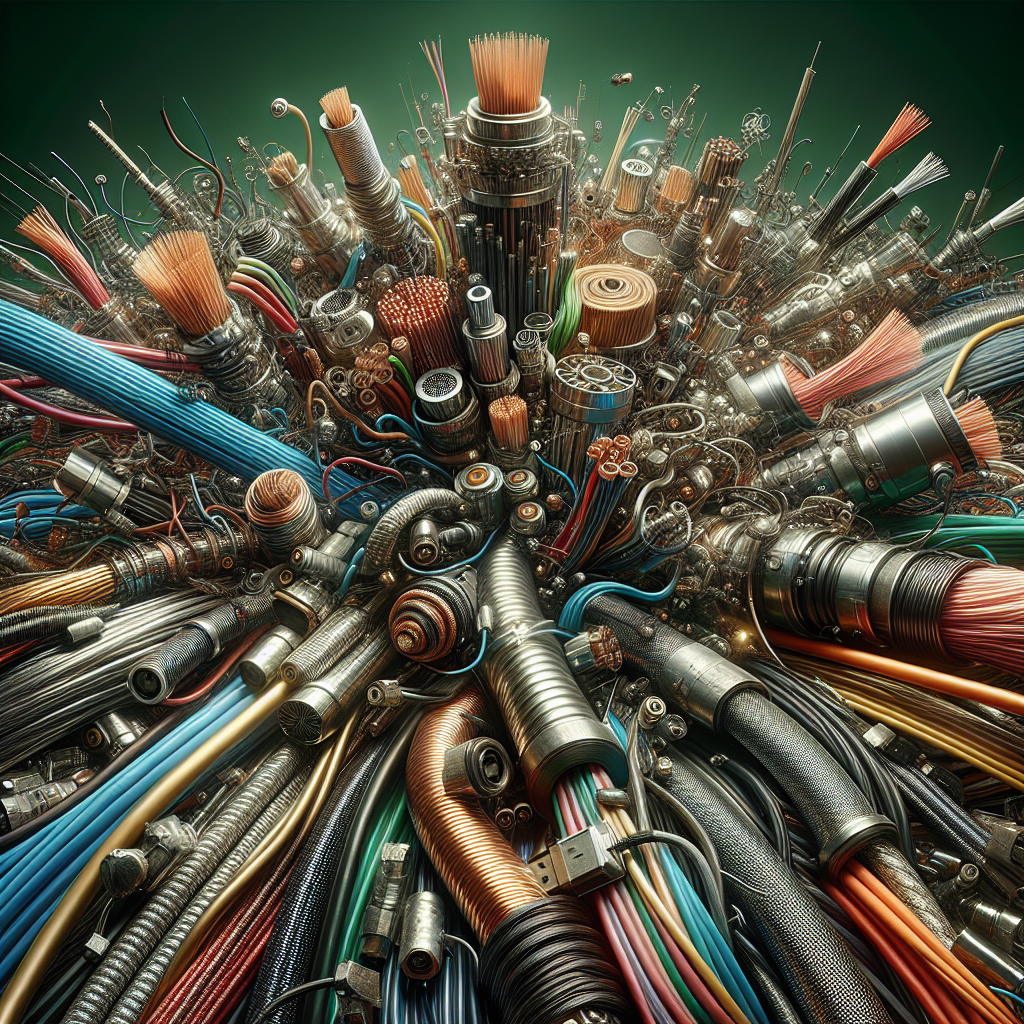Blog Ecobraz Eigre

Which cables and wires can be processed?
Introduction
The reuse of cables and wires is a sustainable practice that helps preserve the environment and recover valuable materials such as copper and aluminum. However, not all cables and wires can be processed in the same way. This article looks at the most common types of cables and wires that can be recycled, their characteristics and the processes involved.
Types of cables and wires that can be processed
1. Copper cables
Copper cables are the most common and valued for recycling due to the material's high electrical conductivity and ease of recovery. They can be found in residential and industrial electrical installations and in electronic equipment. Examples include:
- Conventional electrical cables
- Enameled copper wires used in motors
- Power and telecommunications cables
2. Aluminum cables
Although aluminum has lower conductivity than copper, it is widely used due to its lower cost and reduced weight. Aluminum cables can be reused, especially when their plastic insulation is in suitable condition for removal and recycling. Examples:
- Cables from overhead electrical networks
- Insulated aluminum wires
3. Steel cables and wires
Steel wires, used in some telephone lines, grounding systems or support cables, can also be processed for steel recycling. This material has great value in the metallurgical industry and can be easily collected after sorting.
4. Coaxial cables and telecommunications wires
These cables combine metallic and plastic materials, usually with a copper or aluminum core with metallic shielding. They are used in cable TV, internet and telephone systems. They can be processed to recover the metals and recycle the plastic.
5. Fiber optic cables
Although they do not contain valuable metals, fiber optic cables can be recycled to reuse the plastic that surrounds them and to avoid incorrect disposal in the environment.
Materials that make up recyclable cables and wires
The main materials that justify the processing of cables and wires are:
- Copper: the most widely used conductive metal, with a high value in the recycling market.
- Aluminum: a light and resistant metal with good conductivity.
- Steel: used in cable structures that require greater mechanical resistance.
- Plastics: used as insulators, such as PVC and polyethylene, which can be reused after appropriate processing.
Processing and preparation before recycling
Before sending the cables and wires for recycling, it is important to carry out a few steps:
- Separation: the cables must be classified by type and predominant material.
- Removal of connectors and accessories: so as not to compromise the quality of the recycled material.
- Stripping: a process that consists of separating the metal from the plastic insulation, which can be done manually or by specialized machines.
- Crushing: reducing the material into smaller pieces to facilitate processing.
Cables and wires that are not recommended for recycling
Some types of cable are difficult to recycle due to their composition or contamination, such as:
- Cables with coatings containing toxic substances or flame retardants that make processing difficult.
- Cables damaged by exposure to chemical agents that contaminate the materials.
- Wires that have unique technologies that make it difficult to separate the components.
Conclusion
Processing cables and wires for recycling is an important activity for sustainability and saving natural resources. Copper, aluminum and steel cables, as well as coaxial and telecommunications cables, can be recycled efficiently, provided they are separated and prepared correctly. Avoiding improper disposal contributes to waste reduction and a cleaner planet.

Deixe um comentário
O seu endereço de e-mail não será publicado. Campos obrigatórios são marcados com *